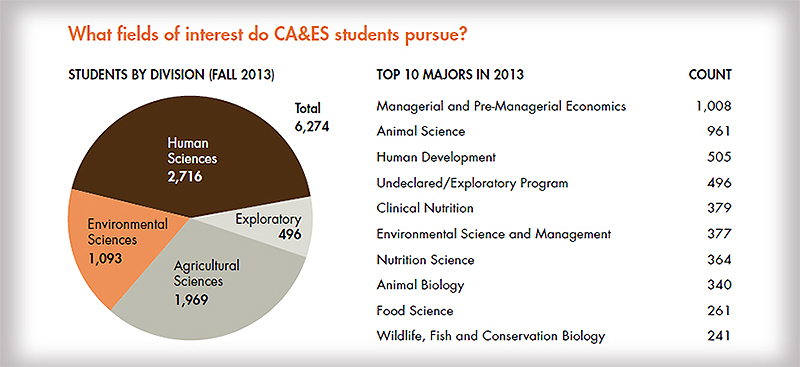
Getting Our Hands Dirty
You are here: Home / News / Articles / outlook / 2014 / November /
Getting Our Hands Dirty
Nov 17, 2014 — By Robin DeRieux and John Stumbos — CA&ES Outlook Magazine — University of California, Davis
Through internships, jobs, and research activities, many of our students receive a hands-on learning experience at UC Davis.
Developing horse sense
Foal watch is 7 p.m. to 7 a.m. at the UC Davis Horse Barn. Horses typically give birth at night, and an electronic sensor attached to the mare sounds an alarm when labor begins. Student foal managers, who bunk at the barn when they're on foal watch, leap into action.
“You wake up in the middle of the night to this piercing alarm, you clear your head, and then you’re hurrying past all the stalls to see which mare is foaling,” said foal manager Rachel Pagenkopp, an animal science major from Whittier. “It’s quite an adrenaline rush.”
Horse Barn manager Joel Viloria is alerted electronically at home and arrives at the barn to guide student interns through the first few births of the year. After that, students fly solo, calling for backup from Viloria or a veterinarian only if there are complications with the delivery. If needed, a webcam in the stall also lets Viloria view the birth from home.
“We wait for three things,” said Pagenkopp, who has handled three foal deliveries on her own. “The foal has an hour to stand, two hours to nurse, and the mare has three hours to pass her placenta. After that, whoever’s on foal watch can go back to bed.”
Through internships, jobs, and research activities, many CA&ES students receive real world experience that complements their academic training. In the article sections that follow, we look into the lives of some undergraduate students who have stepped outside the lecture hall to build practical skills and explore careers for their future.

The following day, foal managers run blood tests to make sure the new foal’s immune system is functioning properly. If the foal’s antibodies are insufficient, students learn how to intervene with stored colostrum or plasma.
“We try to run this operation as close to the horse breeding industry as possible,” said Viloria, (B.S., ’06, animal science). “In the real world, you don’t call the vet for every little procedure. If it’s a bad problem, we use it to instruct students that this is the kind of situation when we need to call a vet.”
Located across the street from Meyer Hall, the Department of Animal Science Horse Barn is a breeding, teaching, and research facility with a herd of approximately 40 donated horses, including four stallions, and two male donkeys. The Horse Barn runs on student power, with guidance and instruction from Viloria and animal science professor Janet Roser. Each quarter, approximately 10 to 20 entry-level student interns learn to handle horses, clean stalls, assist the farrier, exercise horses, and do other chores that contribute to the welfare of the herd. Advanced interns manage the reproduction duties.

Professor Roser teaches equine science courses that are required for students who intern as foal and stud managers each year from January through June. It’s important to Roser that they master the theory behind the hands-on training they get at the barn.
“Someone could give them a handbook that lists all the steps to follow,” said Roser. “But when they learn the anatomy, physiology, and endocrinology behind it all, then what needs to be done comes to them more easily. We’re training these students to be managers, not just employees.”
Foal managers handle 15 to 25 births per season. At the end of each school year, the Horse Barn sells off yearlings and two-year-olds that were bred and trained by students.
Stud managers collect semen from stallions several times per week. Picnic Day demonstrations of the semen collection process at the Horse Barn arena show what a memorable task this is.
“It’s scary collecting the first time,” said Alexandra Paul, one of four stud managers at the Horse Barn. “But Joel shows us how to do all three jobs involved—handling, hygiene, and collecting.” Immediately after collection, stud managers process and store the semen for future use. Stud managers also track the reproductive cycle of the mares and artificially inseminate them.
Stud manager Paul is an animal science major from Visalia who hopes to work in the horse industry after graduation. Her six-month internship at the Horse Barn requires a minimum of 20 hours a week, in addition to academic obligations. Paul estimates that she spends almost twice that. “This is what I’ve always loved,” she said. “For me, the commitment to interning at the Horse Barn is worth it because it gives me a taste of what my life will be like after college.”
Barn manager Viloria is committed to giving students the hands-on experience they will need to become veterinarians or to work in the horse industry. “By the time students leave this program, they will have done everything,” he said. “I am here to help direct, but the students do it all themselves. The beauty is that they learn the theory in class, and then they come here and apply it.”
Digging into life on the farm
From its inception as a place for research on alternative and organic agriculture to its development into a market garden and ecological garden, the Student Farm has always been about student innovation.
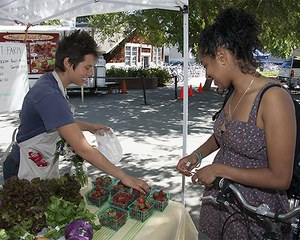 Nicolia Mehrling, who graduated in June, took full advantage of what the farm has to offer in pursuit of a bachelor’s degree in sustainable agriculture and food systems (SAFS). On any given day, you could find her harvesting kale or asparagus, selling freshly picked produce at the UC Davis Farmers Market, or contacting produce basket customers in the Community Supported Agriculture (CSA) program.
Nicolia Mehrling, who graduated in June, took full advantage of what the farm has to offer in pursuit of a bachelor’s degree in sustainable agriculture and food systems (SAFS). On any given day, you could find her harvesting kale or asparagus, selling freshly picked produce at the UC Davis Farmers Market, or contacting produce basket customers in the Community Supported Agriculture (CSA) program.
“We have to decide what makes a valuable CSA basket,” she said. “We often look for interesting options to include for our subscribers, or sacrifice certain vegetables in order to include others. We aim to produce baskets with 12 to 15 different vegetables.”
The market garden produces weekly bushel baskets for 72 subscribers from the UC Davis community. For an upfront fee averaging $22 a week, subscribers receive an assortment of produce—Chioggia beets, rainbow chard, fennel, mint, flowers, rutabagas, and red lettuce, to name a few.
In addition to her work in the market garden, Mehrling also did an internship with the Kids in the Garden program in the Ecological Garden. “It gave me perspective and access to a different type of education,” she said. “We taught kids about plants in the garden, bugs, chickens, and garden cycles. The idea is to get them excited about plants and also to understand that food is more than what comes from the grocery store.”
Nearly 40 years ago students helped bring the Student Farm into being. Now, students like Mehrling are shaping its future. To fulfill requirements for a capstone class in the SAFS major, she and fellow students worked with campus planners to create a long-range vision for the Student Farm and adjacent areas such as the Domes and the Experimental College Community Garden—a district they call the Sustainable Living and Learning Communities.
“They’re all sort of independent,” Mehrling said, “but they all have common goals around establishing relationships between food and people and land—and having student voices be central to their development.”
Tapping into a career in irrigation
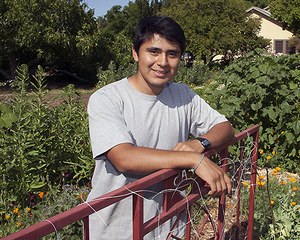
Paul Martinez found his calling working with irrigation systems on the Student Farm.
Next June he will graduate with a bachelor’s degree in sustainable agriculture and food systems. For many students, this major is a gateway to the Student Farm— typically through “Plant Sciences 15,” an introduction to sustainable agriculture that uses the farm as an outdoor classroom.
“We learned the basics about farming, some issues, and positive solutions,” Martinez said. “I liked the hands-on experience, and that was one thing I was definitely looking for in my college experience.”
Martinez had no agricultural experience growing up in urban Southern California. But his grandfather’s stories about farming in Mexico and the hardships that followed when water was scarce made a lasting impression. “Sometimes they would have very little water for the season to plant anything,” he said. “Those years were hard for the family since that was their main source of income.”
During a summer internship at the Student Farm Market Garden, Martinez learned how to install, fix, and maintain irrigation systems. “Drip, furrow, or sprinklers—there’s always a leak,” he said.
Martinez is focused on water quality and irrigation. “I want to go into the management of irrigation systems to help reduce water contamination in agriculture and to enhance soil nutrients,” he said. “That’s what I’m aiming for once I graduate.”
Martinez spent last summer working as a volunteer with water quality and irrigation specialists in the Davis and Dixon offices of the Natural Resources Conservation Service.
“Water is going to continue to be an issue, especially in agriculture,” Martinez said. “Managing water in a sustainable manner, especially for irrigation, is going to be crucial.”
Advancing knowledge of toxins
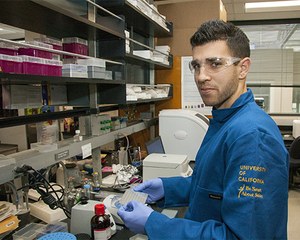
Sunjay Sethi planned to study biochemistry when he transferred to UC Davis. Then he discovered environmental toxicology.
“It sounded interesting, so I started looking into it,” he said. “I realized it was still biochemistry but involved more real-world applications, chemicals that we use every day.”
Environmental toxicology is the study of how chemicals move within the environment and affect biological systems. It relies on environmental chemistry to study exposure routes of toxins, along with the mechanisms of intoxication.
Sethi became intrigued with the research of environmental toxicology professor Michele La Merrill on prenatal exposure to pesticides and metabolic disorders. He joined her lab as an undergraduate researcher during his senior year.
“Sunjay is a team player I can count on to help and train others,” La Merrill said. “Importantly, he is fun to be around and gets along with everyone.”
Sethi quickly became fluent in an alphabet soup of genetic coding as he gained laboratory experience conducting molecular analyses of mouse tissues. Under La Merrill’s guidance, he learned how to look for genes such as those controlling muscle, fat, and heart function. He also analyzed data for trends.
“We saw an upward trend in the Ryanodine receptor in the heart that’s involved with calcium signaling of the cardiac muscle,” Sethi said. “This affects heart rhythm—how the heart beats and the strength of it.”
Sethi also proved to be a stellar student, earning one of the highest grades ever in La Merrill’s “Genes and the Environment” course. He graduated with highest honors in June 2014 with a Bachelor of Science in Environmental Toxicology. Assisted by a Floyd and Mary Schwall Fellowship for medically related research, he is back in the La Merrill lab as a graduate student to pursue a doctorate.
Sethi hopes to advance knowledge of the mechanisms underlying how environmental chemical exposures may contribute to the risk of diabetes and obesity. He is developing screening methods for environmental pollutants with the potential to act as “obesogens” and “diabetogens” in humans.
“We’re working on a standard method of tests to identify whether a compound is affecting insulin signaling or the ability to create or break down lipids (fat molecules),” he said.
Sethi notes there are thousands of compounds used in commerce and industry that little is known about. “It’s necessary to come up with a standard, quick way to screen these compounds and see if they are going to have a potential effect on the way we metabolize things and the way our metabolism works,” he said.
Gaining insights into children
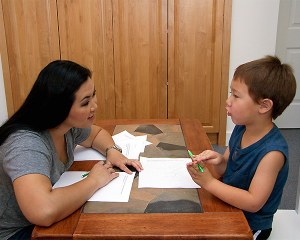
Vicki Fu wants to know, “If a mother bird and a baby bird each eat three lizards, how many did they eat in all?”
As an undergraduate (B.S., ’14, human development), Fu participated in research to gain insight into the way children think. She worked with children ages 4 to 6 on word problems. After helping children devise arithmetic strategies to work through word problems, researchers then assessed how well the children could apply those techniques on their own when solving similar questions.
“I had read about these kinds of studies in textbooks, but I wasn’t exactly sure how researchers got the results,” said Fu, a first-generation college graduate from Sacramento. “When you actually get to work with a child and you see how their imagination goes, you understand that a child’s mind is so bountiful. It takes effort to reel them in so you can make discoveries about how they think and get to a research result.”
“If you just give children the answer, then they have nothing to be proud of because they didn’t accomplish anything. This experience taught me to draw my own boundaries as a teacher. Of course, you want to help children so much, but I learned you can help them more by not doing things for them.” - Vicki Fu
Research insights into child cognition can be applied to classroom instruction. This is relevant to Fu, as she eventually hopes to teach elementary school. She recently began studies for a master’s degree in education at UC Davis.
Human development professor Zhe Chen designed the word problem study that Fu and other undergraduate research assistants helped conduct under the guidance of Chen’s associate, lecturer Tracy Nishida. Chen typically has six to 10 undergraduates each quarter who help with research.
“We really need undergraduates to help in the lab— it wouldn’t function without them,” said Nishida, who took on Fu and other interested students after teaching a child development course. “They help us recruit the parents and children, run the studies, code the data, and enter it into spreadsheets.”
Undergraduate research gives students laboratory experience and the opportunity to become better acquainted with their professors and with research methods. Fu also gained insights into working with children that will help her in the classroom when she becomes a teacher.
“I learned that if you just give children the answer, then they have nothing to be proud of because they didn’t accomplish anything,” said Fu. “This experience taught me to draw my own boundaries as a teacher. Of course, you want to help children so much, but I learned you can help them more by not doing things for them.”
